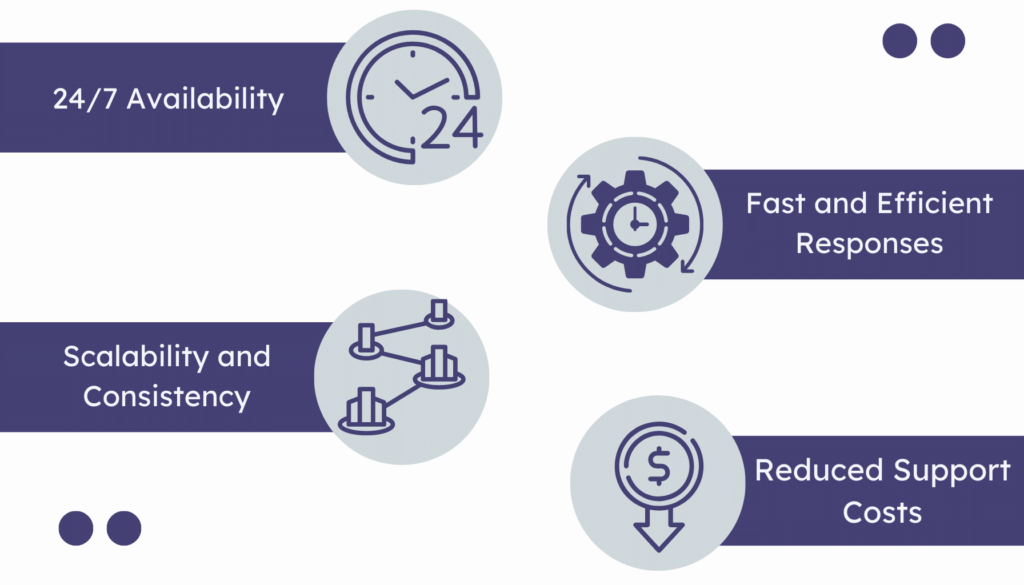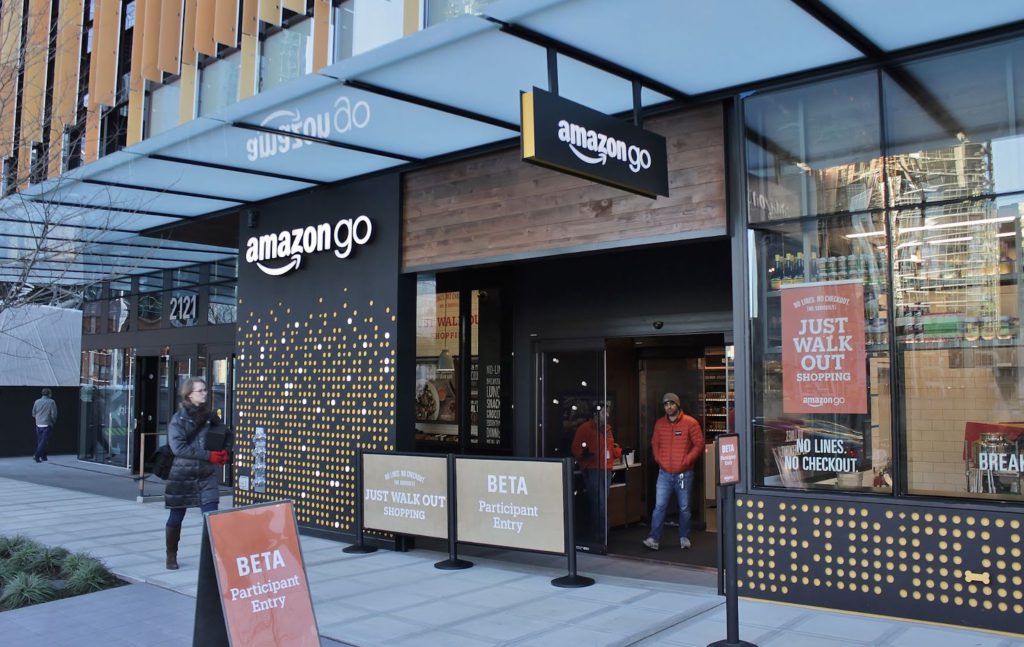How AI is Transforming the Retail Industry


We all shop, we all consume, so the retail industry has always been at the forefront of innovation, constantly adapting to meet the ever-changing needs and expectations of customers. In recent years, one technology has emerged as a powerful catalyst for transformation within the retail sector: Artificial Intelligence (AI). AI is revolutionizing the way retailers operate, enabling them to enhance customer experiences, optimize inventory management, streamline operations, and drive sales growth like never before.
AI, with its ability to analyze vast amounts of data and learn from patterns and behaviors, has become an invaluable tool for retailers seeking to gain a competitive edge in a crowded marketplace. From personalized recommendations and virtual assistants to augmented reality and automated checkout, AI is reshaping every aspect of the retail journey.
We’ll explore the incredible ways AI is revolutionizing the retail industry and the opportunities that lie ahead.
Enhancing Retail Industry Customer Experience with Personalized Recommendations
In the fiercely competitive retail landscape, understanding and meeting customer preferences is crucial for success. This is where AI-powered personalized recommendations are transforming the customer experience; by offering tailored suggestions and product recommendations based on individual preferences and behaviors.
Gone are the days of generic product recommendations that may or may not resonate with customers. Personalized recommendations leverage the power of AI algorithms to analyze vast amounts of customer data, including purchase history, browsing behavior, demographics, and even social media activity. By understanding each customer’s unique preferences and interests, retailers can deliver highly targeted and relevant product suggestions, leading to improved customer satisfaction and increased sales.
AI-Powered Recommendation Engines
AI-powered recommendation engines are the driving force behind personalized recommendations in the retail industry. These engines employ sophisticated algorithms to process and analyze customer data, identifying patterns, correlations, and trends. By learning from past interactions and understanding customer preferences, these engines can accurately predict the products that are most likely to resonate with each individual.
The recommendation engines employ various techniques, including collaborative filtering, content-based filtering, and hybrid approaches. Collaborative filtering compares the preferences and behaviors of similar customers to make recommendations, while content-based filtering analyzes the attributes of products and matches them to customer preferences. Hybrid approaches combine these methods to provide even more accurate and diverse recommendations.
Benefits of Personalized Recommendations for Customers
Personalized recommendations bring numerous benefits to customers, enhancing their overall shopping experience. Firstly, customers are exposed to a wider range of products that align with their interests and preferences, helping them discover new and relevant items they may not have found otherwise. This increases customer satisfaction and engagement with the retailer’s offerings.
Personalized recommendations save customers valuable time and effort. By presenting them with options that align with their preferences, customers can easily navigate through the vast array of available products, making their shopping journey more efficient and enjoyable. This personalized approach also helps alleviate decision fatigue, making it easier for customers to make confident purchase decisions.
Additionally, personalized recommendations foster a sense of exclusivity and personalization, making customers feel valued and understood. When retailers demonstrate a deep understanding of their customer’s preferences and consistently provide relevant recommendations, it builds trust and strengthens the customer-retailer relationship.
Lastly, personalized recommendations have a direct impact on customer loyalty and retention. When customers feel that a retailer understands their unique needs and consistently delivers personalized experiences, they are more likely to return for future purchases and become brand advocates, driving long-term business growth for the retailer.

Improving Customer Support and Engagement with Virtual Assistants and Chatbots
Providing efficient and effective customer support is crucial for retailers to stay competitive and meet the evolving expectations of consumers. Virtual assistants and chatbots powered by AI technology have emerged as invaluable tools for enhancing customer support and engagement in the retail industry.
These intelligent systems simulate human-like conversations and are capable of understanding natural language, answering queries, and assisting with various tasks. They can be integrated into websites, mobile apps, and messaging platforms, allowing customers to access support and information conveniently and instantly.
Virtual assistants and chatbots have revolutionized customer support by offering several advantages over traditional methods:
- 24/7 Availability: Unlike human agents, virtual assistants, and chatbots are available round the clock, providing support and information to customers at any time. This ensures that customers receive timely assistance while minimizing wait times, leading to increased satisfaction and improved customer experience.
- Fast and Efficient Responses: Virtual assistants and chatbots can provide instant responses to customer queries, eliminating the need for customers to wait in queues or wait for email responses. This speed and efficiency enhance customer engagement and prevent potential frustration or abandonment during the purchasing process.
- Scalability and Consistency: Virtual assistants and chatbots can handle multiple customer interactions simultaneously, ensuring scalability in customer support operations. Moreover, they consistently deliver accurate and standardized information, avoiding human errors and discrepancies in responses.
- Reduced Support Costs: Implementing virtual assistants and chatbots can significantly reduce customer support costs for retailers. As they automate a substantial portion of customer interactions, retailers can allocate their human support resources more efficiently and effectively, focusing on complex issues that require human intervention.
Examples of Successful Virtual Assistants in Retail
Several retailers have successfully implemented virtual assistants and chatbots to enhance customer support and engagement. For example:
- Domino’s Pizza Chatbot
Domino’s Pizza uses a chatbot on various messaging platforms, allowing customers to place orders, track deliveries, and get assistance with common inquiries. The chatbot provides a seamless and convenient ordering experience.
- Lego’s Ralph the Gift Bot

Lego introduced Ralph the Gift Bot, a virtual assistant that helps customers find suitable gifts based on recipients’ age, interests, and budget. This interactive chatbot guides customers through the gift selection process, providing personalized recommendations.
Optimizing Inventory Management with Demand Forecasting and Supply Chain Optimization
Efficient inventory management is a critical aspect of the retail industry, directly impacting customer satisfaction, operational costs, and profitability. With the advent of Artificial Intelligence, retailers now have access to advanced tools and techniques that optimize inventory management processes through demand forecasting and supply chain optimization.
Key benefits of demand forecasting and supply chain optimization with AI include:
- Improved Inventory Accuracy: AI algorithms can analyze vast amounts of data and identify patterns and trends that may not be evident to human analysts. This leads to more accurate demand forecasts, reducing the risk of inventory imbalances and optimizing stock levels.
- Logistics Optimization: AI algorithms can analyze transportation routes, shipment volumes, and real-time data to optimize logistics operations. This includes optimizing delivery routes, identifying the most efficient transportation modes, and reducing transportation costs.
- Enhanced Efficiency: AI algorithms automate the demand forecasting process, saving time and resources compared to manual methods. Retailers can generate forecasts more frequently, allowing for more dynamic inventory management and quicker response to market changes.
- Optimized Replenishment: By accurately predicting demand, retailers can ensure optimal replenishment levels and avoid excess inventory. This minimizes carrying costs, reduces the risk of perishable goods expiring, and maximizes cash flow.
- Demand-Driven Production: By integrating AI-powered demand forecasts with production planning, retailers can align manufacturing processes with customer demand. This prevents excess inventory, reduces lead times, and enables a more responsive and demand-driven production system.
Streamlining Operations and Sales with Automated Checkout and Cashierless Stores
In the pursuit of optimizing operations and enhancing the customer experience, retailers are increasingly turning to AI-powered technologies to automate the checkout process and create cashier-less stores.
These systems incorporate computer vision, sensor technologies, and machine learning algorithms to identify and track products as customers place them in their shopping carts or bags.
Cashier-less stores take the concept of automated checkout a step further by eliminating the need for traditional checkout counters and cashiers altogether. These stores leverage AI-powered technologies to track customer movements, recognize selected products, and automatically charge customers for their purchases.
Benefits of AI-powered automated checkout and cashier-less include:
- Reduced Checkout Time: With automated checkout, customers can simply pick up items, place them in their carts or bags, and walk out of the store. The AI-powered system automatically recognizes and charges for the items, eliminating the need for scanning individual barcodes. This significantly reduces checkout time and minimizes waiting queues.
- Enhanced Accuracy: AI algorithms are capable of accurately identifying and tracking products, even in scenarios where items may be partially obscured or stacked together. This improves the accuracy of inventory management and ensures that customers are charged correctly for their purchases.
- Improved Inventory Visibility: Automated checkout systems equipped with AI technologies provide real-time visibility into inventory levels. By tracking product movement and sales data, retailers can monitor stock levels more effectively, optimize restocking processes, and proactively address inventory gaps or surpluses.
A few retailers have already embraced AI-powered innovations, such as:
- Amazon Go: Amazon Go stores use computer vision, sensor fusion, and deep learning technologies to enable cashier-less shopping experiences. Customers scan their mobile app upon entering the store, and the AI-powered system automatically detects products as customers pick them up. Customers are then charged for their purchases via their Amazon account upon leaving the store.

- JD.com’s 7Fresh: JD.com’s 7Fresh stores in China employ AI technologies, including computer vision and facial recognition, to enable cashier-less checkout. Customers’ facial features are scanned upon entry, and the system tracks their product selections. Payment is automatically processed through the linked payment method upon exit.
AI-Powered Fraud Detection and Prevention Systems
In the retail industry, the importance of fraud detection and prevention cannot be overstated. Fraudulent activities, such as identity theft, payment fraud, and account takeovers, pose significant risks to both retailers and customers.
To combat these threats, retailers are increasingly turning to AI-powered fraud detection and prevention systems, which leverage advanced algorithms and machine learning techniques to identify and mitigate fraudulent activities effectively.
AI-powered fraud detection systems leverage advanced algorithms and machine learning techniques to identify patterns, anomalies, and suspicious activities indicative of fraud. These systems analyze large amounts of data, including transaction records, customer behavior, and historical fraud patterns, to identify potential fraudulent activities accurately.
These systems work with:
- Advanced Pattern Recognition: AI algorithms can identify complex patterns and anomalies that may be indicative of fraudulent activities. By analyzing historical data and detecting deviations from normal behavior, these systems can identify potential fraud in real time.
- Machine Learning Models: AI-powered fraud detection systems use machine learning models that continuously learn and adapt to new fraud patterns. These models improve over time by incorporating new data and evolving fraud techniques, enabling more accurate and efficient fraud detection.
- Integration of Multiple Data Sources: AI algorithms can analyze data from various sources, such as transaction records, customer profiles, IP addresses, and device information. By integrating multiple data points, fraud detection systems can gain a comprehensive view of customer behavior and identify potential fraud across different channels.
As a result, retailers get:
- Immediate Alerting: AI-powered systems can instantly alert retailers or fraud prevention teams when suspicious activities are detected. This allows for immediate investigation and action, reducing the potential impact of fraudulent transactions.
- Automated Decision-Making: AI algorithms can make real-time decisions based on predefined rules and machine learning models. For example, if a transaction is deemed high-risk, the system can automatically trigger additional security checks or block the transaction to prevent fraud.
- Adaptive Risk Scoring: AI-powered systems assign risk scores to transactions and activities based on the likelihood of fraud. By continually updating risk scores based on evolving patterns, these systems can dynamically adapt and prioritize the most suspicious activities for investigation.
Dynamic and Personalized Pricing Strategies
Dynamic and personalized pricing strategies, powered by AI, provide retailers with a competitive edge in today’s dynamic retail environment. By leveraging advanced analytics and customer insights, retailers can optimize revenue, manage demand, and offer personalized experiences that cater to individual customer preferences.
Benefits of Dynamic Pricing
- Optimized Revenue: By continuously monitoring and adjusting prices, retailers can optimize their revenue by maximizing sales and capturing the full value of their products or services. Dynamic pricing allows retailers to respond to changes in market demand, competitor pricing, and customer willingness to pay.
- Competitive Advantage: Dynamic pricing strategies empower retailers to stay competitive by quickly adapting to market fluctuations and effectively pricing their products relative to competitors. This flexibility enables retailers to attract price-sensitive customers while maintaining profitability.
- Demand Management: Dynamic pricing helps retailers manage demand by strategically adjusting prices during peak and off-peak periods. By incentivizing customers to shift their purchasing behavior to less crowded or low-demand periods, retailers can balance demand, minimize stockouts, and optimize operational efficiency.
- Dynamic Offers and Discounts: AI algorithms can analyze customer data to identify opportunities for personalized offers and discounts. By understanding individual customer preferences and purchase histories, retailers can present targeted offers that are more likely to drive conversions and increase customer loyalty.
Ethical Considerations and Transparency of Dynamic Pricing
While dynamic and personalized pricing strategies offer numerous benefits, it is essential for retailers to consider ethical implications and maintain transparency to build trust with customers.
- Fairness and Discrimination: Retailers must ensure that personalized pricing strategies do not result in unfair or discriminatory practices. Pricing decisions should be based on objective factors rather than discriminatory attributes such as race, gender, or socioeconomic status.
- Transparency and Communication: Retailers should be transparent with customers about the use of dynamic and personalized pricing. Clear communication about pricing strategies, data usage, and customer segmentation helps build trust and maintains a positive customer-retailer relationship.
- Data Privacy and Security: Retailers must prioritize the protection of customer data and comply with relevant privacy regulations. Collecting and using customer data for pricing purposes should be done in a secure and responsible manner, with customer consent and privacy preferences taken into account.
Conclusion
AI is transforming the retail industry, revolutionizing customer experiences, optimizing operations, and driving innovation.
From enhancing the customer experience with personalized recommendations to streamlining operations with automated checkout and cashier-less stores, AI is reshaping the way retailers operate and interact with customers.
From AI-powered fraud detection to demand forecasting to supply chain optimization retailers can safeguard their operations, optimize inventory management, and prevent fraudulent activities.
Embracing these AI-powered advancements will be crucial for retailers to stay competitive, meet customer expectations, and thrive in the ever-changing retail landscape.





